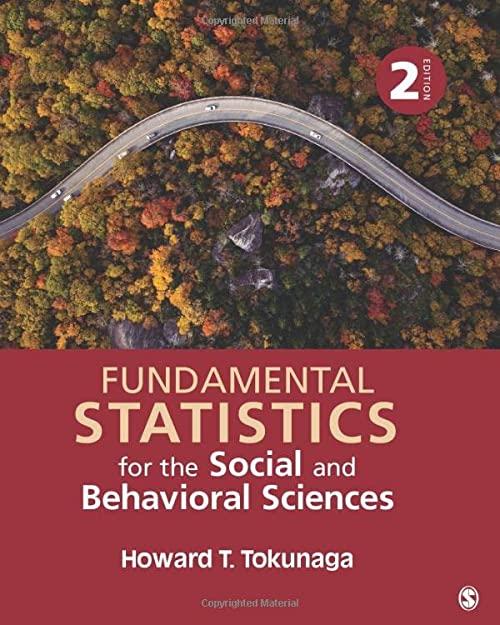A team of audiologists was interested in examining whether their patients' satisfaction with their hearing aids was
Question:
A team of audiologists was interested in examining whether their patients' satisfaction with their hearing aids was related to how long they had used hearing aids (Williams, Johnson, \& Danhauer, 2009). They divided their patients into two categories, new users \((N=30)\) and experienced users \((N=34)\), and asked them to indicate how satisfied they were with their hearing aids; the higher the score, the greater the satisfaction. The new users reported a mean satisfaction of 26.90 on the scale (standard deviation \(=3.96\) ), and the experienced users reported a mean satisfaction of 28.03 (standard deviation = 5.04). Use the steps of hypothesis testing to test the difference in satisfaction between new and experienced users.
a. State the null and alternative hypotheses \(\left(\mathrm{H}_{0}\right.\) and \(\left.\mathrm{H}_{1}\right)\).
b. Make a decision about the null hypothesis.
(1) Calculate the degrees of freedom \((d f)\).
(2) Set alpha ( \(\alpha\) ), identify the critical values (draw the distribution), and state a decision rule.
(3) Calculate a value for the \(t\)-test for independent means (when calculating the standard error of the difference \(\left[{ }^{s_{1}-\bar{X}_{2}}\right]\), be sure to use the formula for unequal sample sizes).
(4) Make a decision whether to reject the null hypothesis.
(5) Determine the level of significance.
c. Draw a conclusion from the analysis.
d. Is patients' satisfaction with hearing aids related to how long they have used hearing aids?
Step by Step Answer:

Fundamental Statistics For The Social And Behavioral Sciences
ISBN: 9781506377476
2nd Edition
Authors: Howard T Tokunaga




